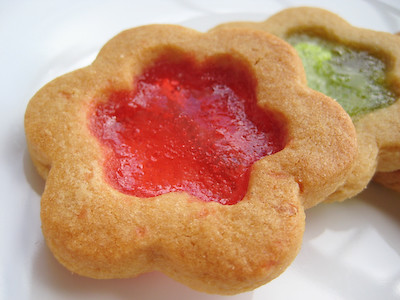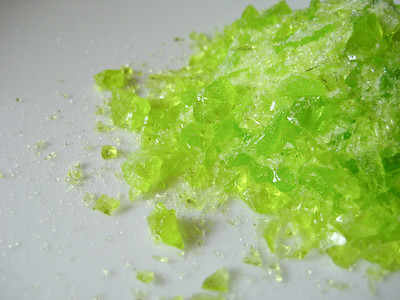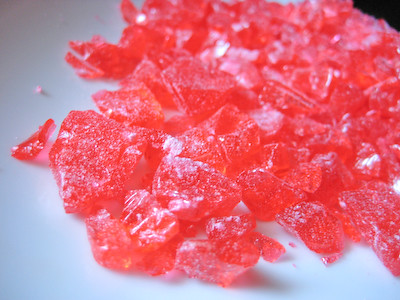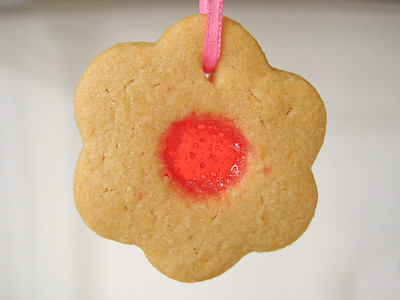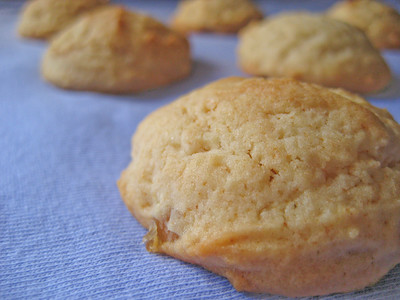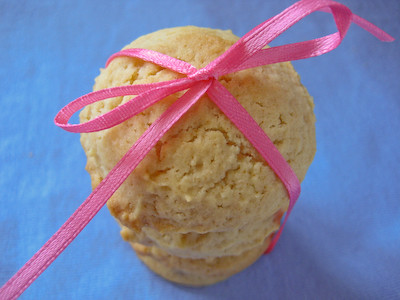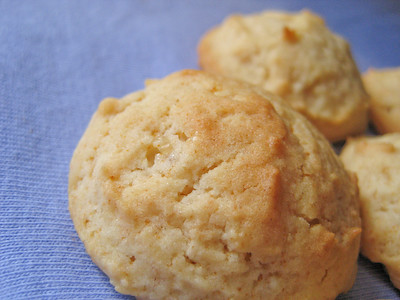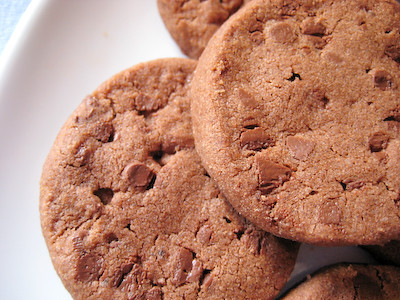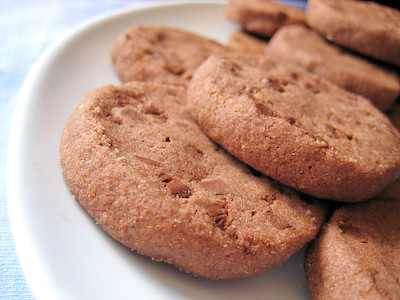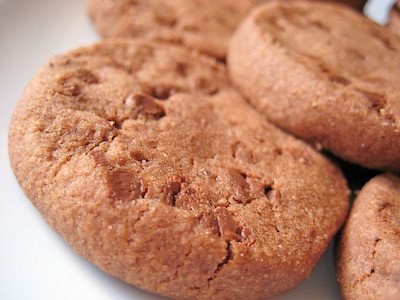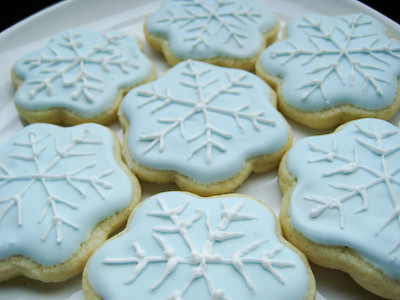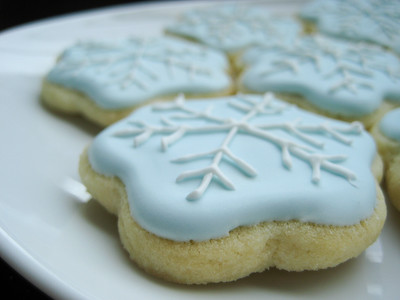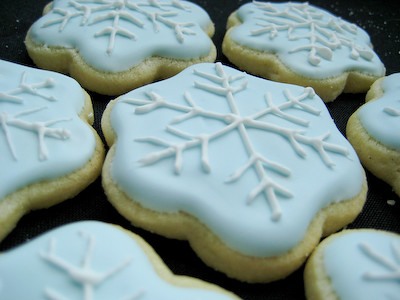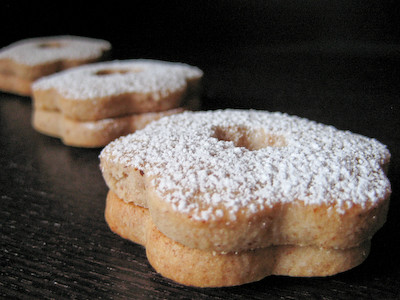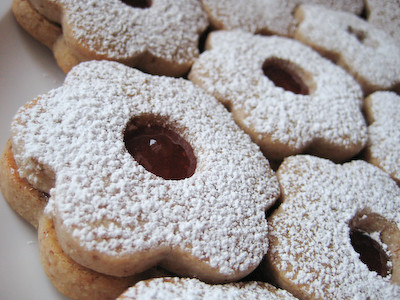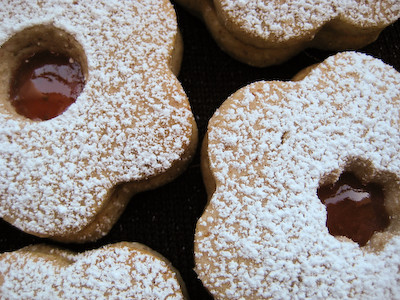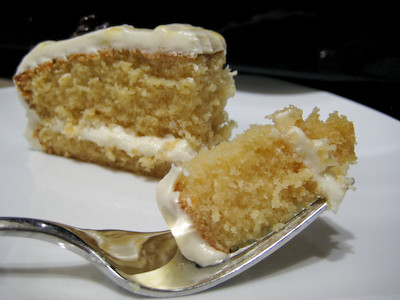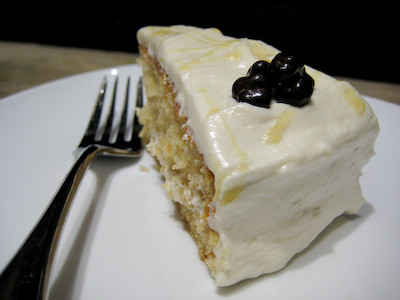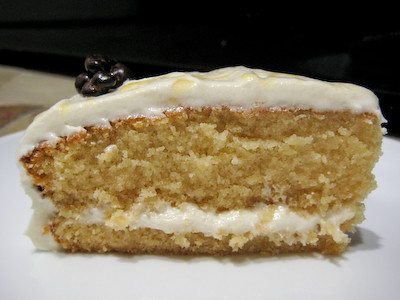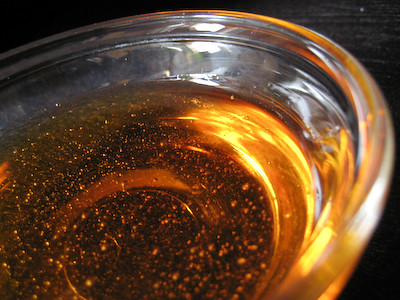
I like gingerbread cookies, but I love molasses spice cookies even more. Partly because of the spices, and partly because I love the chewy texture of the spice cookies. Last year, I made some molasses spice cookies from Good Things Catered. This year, I wanted to see how Dorie Greenspan's recipe would compare. The main difference between the two recipes appears to be the types of sugars used. Dorie's recipe uses all brown sugar, whereas the other one uses a combination of white, granulated sugar and brown sugar. My mom always says that brown sugar gives everything a better flavor, so I was pretty sure that I would like these.
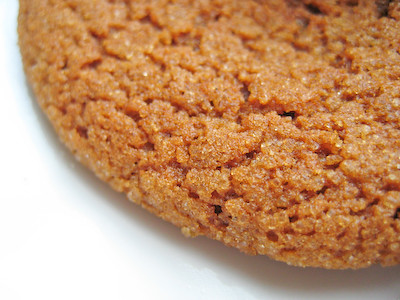
These cookies, like most cookies, are very easy to make. They do require an hour of refrigeration (or 30 minutes in the freezer), so plan accordingly.
I learned from the cookies I made last year that ground black pepper can give these cookies a nice little kick... so I made sure to include more than just a pinch in these :)
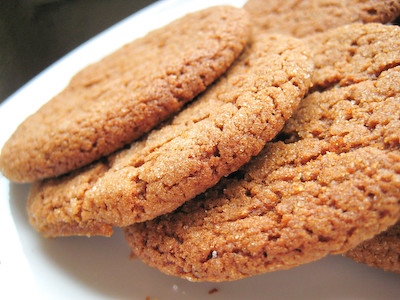
I think Dorie's cookies are slightly better, though both recipes are really great. Be careful when you are baking these, though, not to over bake them. They look a bit soft in the middle when they are done, but firm up once they are cooled. I did not know this when I created my first batch, and let it bake longer, resulting in a crunchy cookie instead of a soft and chewy one.
Also make sure you don't place these cookies too close together on your baking sheet. I did not realize they would spread so much, so my first batch ended up looking like a big cobblestone sidewalk! (They still tasted great, though!)
These were perfect in my holiday gift packages, and would be a nice addition to your holiday platter this year!
You'll also find these cookies as part of "Eat Christmas Cookies, Season 2," hosted by Susan of Food Blogga. Click on the logo below to find out more about this event and click here to see the round-up of all the other wonderful cookies being submitted!
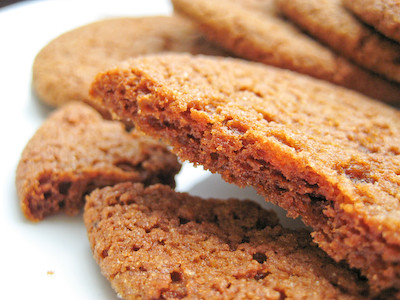
Sugar-Topped Molasses Spice Cookies
from Baking: From My Home to Yours, by Dorie Greenspan
2 1/3 cups all-purpose flour
2 teaspoons baking soda
1/2 teaspoon salt
2 teaspoons ground ginger
1/2 teaspoon ground cinnamon
1/4 teaspoon ground allspice
pinch (small or not so small) of cracked or coarsely ground black pepper (I used 1/4 tsp)
1 1/2 sticks (12 tablespoons) unsalted butter, at room temperature
1 cup (packed) light brown sugar
1/2 cup molasses (not blackstrap)
1 large egg
about 1/2 cup sugar, for rolling
Whisk together the flour, baking soda, salt, ginger, cinnamon, allspice and pepper.
Working with a stand mixer, preferably fitted with a paddle attachment, or with a hand mixer in a large bowl, beat the butter on medium speed until smooth and creamy. Add the brown sugar and molasses and beat for 2 minutes or so to blend, scraping down the sides of the bowl as needed. Add the egg and beat for 1 minute more. Reduce the mixer speed to low and add the dry ingredients, mixing until the flour and spices disappear. If some flour remains in the bottom of the bowl, to avoid overbeating the dough, mix in the last of the dry ingredients by hand with a rubber spatula. You'll have a smooth, very soft dough.
Divide the dough in half and wrap each piece in plastic wrap. Freeze for 30 minutes, or refrigerate for at least 1 hour. (The dough can be kept refrigerated for up to 4 days.)
Getting Ready to Bake:
Center a rack in the oven and preheat the oven to 350 degrees F. Line two baking sheets with parchment or silicone mats.
Put the sugar in a small bowl. Working with one packet of dough at a time, divide it into 12 pieces, and roll each piece into a smooth ball between your palms. One by one, roll the balls around in the bowl of sugar , then place them on one of the baking sheets. Dip the bottom of a glass into the sugar and use it to press down on the cookies until they are between 1/4 and 1/2 inch thick.
Bake the cookies one sheet at a time for 12 to 14 minutes, or until the tops feel set to the touch. Remove the baking sheet from the oven and, if the cookies have spread and are touching, use the edge of a metal spatula to separate them while they are still hot. Transfer the cookies to a rack to cool to room temperature. Repeat with the second batch of dough.
Storage:
The cookies will keep for at least 1 week in the cookie jar. Wrapped airtight, they can be frozen for up to 2 months.






